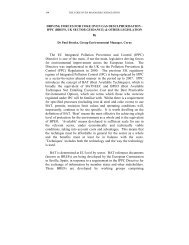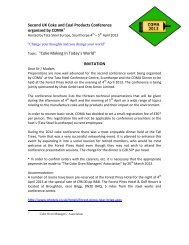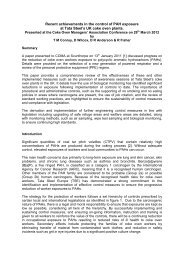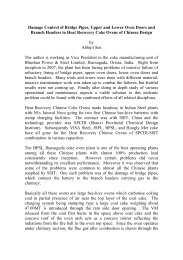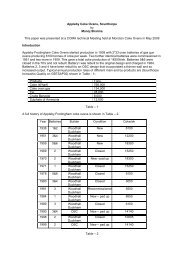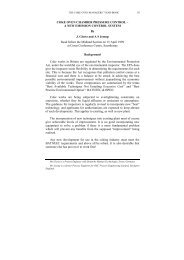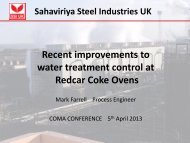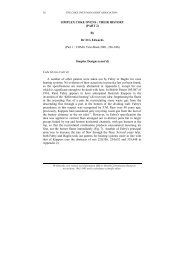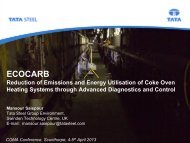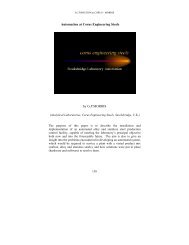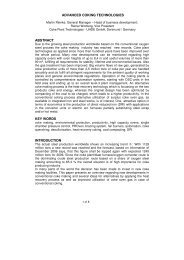CHAIRMAN'S ADDRESS - Coke Oven Managers Association
CHAIRMAN'S ADDRESS - Coke Oven Managers Association
CHAIRMAN'S ADDRESS - Coke Oven Managers Association
- No tags were found...
You also want an ePaper? Increase the reach of your titles
YUMPU automatically turns print PDFs into web optimized ePapers that Google loves.
A REVIEW OF C.O.M.A. ACTIVITIES, 1939-1945 - CLARKE 199.also, in another important aspect, differed from full-scale operation, wheremovement of the walls of one oven is affected by any forces beinggenerated in an adjacent chamber. Incorporating a small additional safetymeasure, Dr. Koppers therefore concluded that coals generating pressuresof more than 1.1 lb./sq.in. (at the bulk density obtaining) should not becarbonised in 4.5 metre coke ovens.Reference was then made by the author to the studies of Koppers andJenkner of the pressures developed by coals during carbonisation. For thispurpose these workers designed a small coking chamber heated from bothsides and having walls which could move independently of each other,being carried separately on frames supported by rollers (Publication of theKoppers Company, Essen, 1937). On the outside of one wall a hydraulicmeasuring device was fitted, and a record could be made either of thepressure generated or wall movement during carbonisation. With this unit itwas also possible to demonstrate the increase in coking pressure with anincrease in both bulk density and rate of heating, and also illustrate thepressure developed as the plastic layers coalesce in the final stages ofcarbonisation. Coals tested in the oven gave pressures generally between0.1 kg./sq.cm. (1.4 lb./sq.in.) and 1.0 kg./sq.cm. (14.0 lb./sq.in.), but somepoorly-coking coals exhibited much lower pressures.The movable-wall oven was constructed for research purposes, andowing to the cost of operation was not considered suitable for routine use,for which purpose simpler equipment was required. Dr. Foxwell thendevoted attention to some of the laboratory-scale tests which had beendevised to distinguish between coals safe to carbonise and those having apotential for causing damage to oven walls. He noted that no small-scaleequipment had then been devised to register the maximum pressureoccurring when the plastic layers meet, and that the best guide which couldbe expected from laboratory testing was to carbonise the coal under strictlydefined conditions, giving an empirical indication which would then enablethe safety or otherwise of a coal to be deduced.In the Koppers laboratory-scale apparatus (Koppers Mitteilung, 1930,Volume 12, p.1) an 80 gram sample of the coal to be tested (air-dried, andcrushed to below 1 mm) is contained in an asbestos-lined heat-resistingsteel crucible, 60 mm internal diameter, heated from below with astandardised gas flame. A standard bulk density of 740/760 kg./cu.m. (dry)



